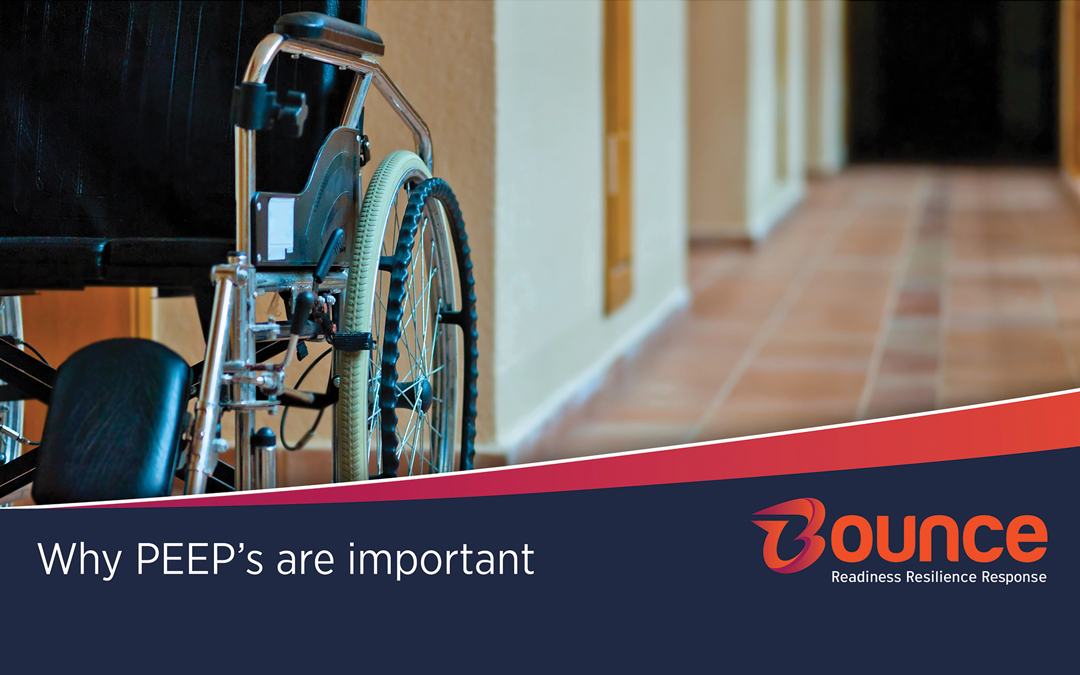By Scott Cresswell, Emergency Management Consultant
Why PEEP’s are important
Linda* has been in a wheelchair all her life. She had worked in her building for 4 years, and when I asked her what she liked most about her job, she told me that the best aspect was how her employer catered to her mobility impairment. Facilities and work practices had been adjusted to ensure she could work safely in her building.
…except they hadn’t. You see, the reason I was talking with Linda, was because she had experienced a “near-miss” incident during a building fire, where she had been unable to evacuate with everyone else. Linda was saved when, miraculously, two firefighters on their way to fight the fire, found Linda sheltering (still in her wheelchair) in the fire stairs. They were able to carry her down the stairs to safety. The Chief Warden of the building hadn’t even known she was missing.
Linda was incredibly lucky. But the anxiety caused by the event was too much. Linda never went back to work.
How did this happen?
I was asked to work with Linda’s employer to provide feedback and recommendations on how to prevent this type of event from re-occurring. During my discussions we discovered that, among the adjustments made for Linda’s mobility impairment, nobody had developed a ‘Personal Emergency Evacuation Plan’ (more commonly known as a PEEP). A well-considered PEEP would have reviewed Linda’s ability to evacuate with other building occupants, identified alternative arrangements to keep her safe, and appointed a support person to assist Linda during incidents. It would have been practiced, so that Linda and her support person knew the benefits and limitations of the arrangements, without having to look at the plan. Lastly, the PEEP would have been provided to Wardens and the Chief Warden, so that they knew to account for Linda during their searches and roll-calling.
A PEEP is incredibly important for building confidence amongst mobility impaired building occupants, and preparing them for emergency events which might impact their workplace. It is essentially an agreement between Wardens and the mobility impaired person about how their safety will be managed. Critically, it should build confidence amongst all staff that the Warden team is consistently assessing the emergency needs for everyone who may be affected.
Consider now, who might need a PEEP at your workplace. Are there people who may not hear or understand the signals to act, or would need assistance to evacuate with the normal flow of occupants? Is there anyone who might need support, such as anyone on the spectrum? If so, then a PEEP should be developed in consultation with the affected person, and registered with the local Wardens, and the Emergency Planning Committee. Lastly, it should be practiced, so that the affected person knows what the expect when the evacuation alarms are sounded.
If you need to develop a PEEP, check your emergency response plan for a template, or reach out to us at Bounce Readiness for advice and support.
*Names and details have been changed to allow relevant parties to remain anonymous.

